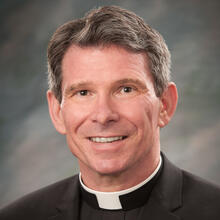He was a soldier of fortune who became a mercenary for the usual reasons: fame, fortune, females. As the youngest son of minor Spanish nobility, there was small prospect of these at home, and his industry and bravery were paying off, when a French canon ball tore open his left calf and broke his right shin. I igo was confined to bed for months, his leg clumsily set, re-broken, and set again. A protruding limb was sawn off. His leg had to be stretched with weights. He passed his long convalescence reading books, either on chivalry or the saints. To his surprise, he began to enjoy the latter, to draw meaning and hope from them. They led to a much deeper Catholicism than Ignatius of Loyola had previously known.
Francesco had a similar experience. When his home town went to war against neighboring Perugia, he bade farewell to his wealthy merchant father and set out to gain what his mother, of minor French nobility, would have called la gloire, but he was captured and spent several months, quite ill, awaiting the payment of ransom. A changed Francis came home to Assisi, one with radically different ideas of what constituted true glory.
The Greek word for baptism, baptizein, is secular in origin. Like our English word "soused" it carries a certain ambiguity. Before Christians adopted the term for their initiatory, ritual bath, it could mean being thoroughly doused with water, even to the point of drowning, or it could refer to a state of inebriation. Did Christians choose the term because of its ambivalence? From the beginning, baptism has suggested both death and exuberance. The New Testament speaks of dying in the waters of baptism but also of being awash with the Spirit because of them.
By the time the gospels were being composed, with the baptism of Jesus given pride of place in them, Christians had already been baptizing for almost two decades. Those Christian rituals stand as backdrop to the story of Christ’s own baptism. In the light of early Christian experience, Saint Luke records Christ himself receiving the Holy Spirit at his baptism, and one has to wonder if we aren’t also meant to see the event as a premonition of the death to come. Certainly, in all of our gospels, it inaugurates the public ministry that will climax at Calvary.
What was in the mind of Jesus, when he willingly underwent John’s apocalyptic ritual for the remission of sins? Probably, like John, he was convinced that the time of God’s entrance into Israel’s history was at hand. And did he understand himself to be Isaiah’s promised one (42:1), with a mission that would require all that he had, even his life? It’s possible that Jesus entered the waters of Jordan as way of accepting his own, coming death.
While the New Testament witness is clear in linking baptism both to death and to the Spirit, it doesn’t fancy any particular sequence. In most cases the reception of the Spirit follows the water, but in some cases, as with the family of Cornelius, the bestowal of the Sprit precedes the bath (Acts 10: 44-48). Peter asks, "Can anyone withhold the water for baptizing these people, who have received the holy Spirit even as we have?" (Acts 10:47) And the New Testament is equally open to the notion that there are fillings of the Spirit subsequent to baptism. Perhaps that’s why, even today, serious illness can be a way in which the Spirit of God enters, and fills, our lives.
Beginning with Saint Paul and his mysterious "thorn in the flesh" the list of saints sanctified by serious ailments is almost as long as the list of holy ones. Illness convinced Francis de Sales to abandon the study of law for theology; sickness transformed Theresa of Avila from convent gadabout to Carmelite reformer. And the illness need not be in one’s own flesh. Providing hospice care to her young, dying husband in Catholic Italy changed the life of Elizabeth Ann Seton. For so many of the saints, sickness washed over them and brought the Spirit in its wake.
Humans, like any animal, are subject to sickness, but we experience serious illness is a way that no animal does. We can’t help but to fear it, to question why it has to be, to wonder about our future, where it will end. Given the rise in assisted suicides, it’s clear that fear can consume a human life. Yet if one remains a person of faith and turns to God, opens the arms of the soul to the creator of life, sickness itself can become an immersion into the waters of death. It can bring the Spirit in its wake.
All sacraments trace their roots to baptism. What we call "Anointing of the Sick" is no more, or less, than a ritual reminder that Christ claimed us in baptism, that we are his, come what may.
Christ was awash with the Holy Spirit at his baptism. Perhaps he was also filled with foreboding, but he faithfully entered the waters of death and rebirth. Baptism, for Christ and for us, is a ritual anticipation of human life itself, a life that always ends in death. For all men and women, like all animals, must die. But for the Christian, baptism — faithfulness to its promise and confidence in its meaning — is, like the Red Sea, a parting of waters. We give ourselves to the waves, knowing the distant shore to which they lead, knowing that the Spirit is in their wake.
Isaiah 42: 1-4, 6-7 Acts 10: 34-38 Luke 3: 15-16, 2-22







